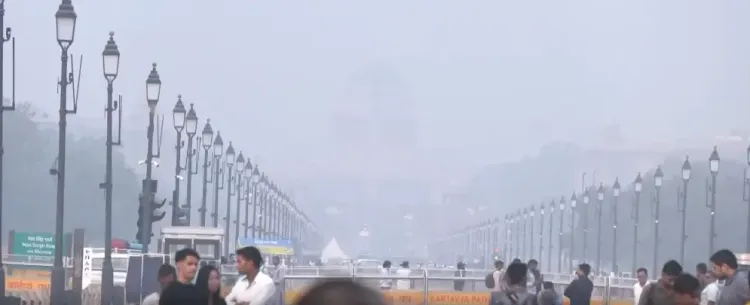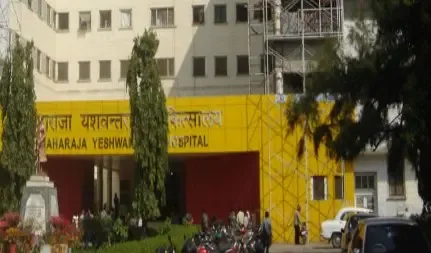Have Pollution Restrictions in Delhi Become More Stringent Due to Toxic Air Quality?

Synopsis
Key Takeaways
- Delhi faces hazardous pollution levels with an AQI exceeding 500.
- The CPCB has enacted stricter measures under GRAP Stage III.
- Residents are urged to work from home and limit outdoor activities.
- Health professionals recommend wearing masks and staying indoors.
- Concentration of PM 2.5 is over 20 times the safe limit set by WHO.
New Delhi, Nov 22 (NationPress) As the air quality in Delhi reaches hazardous levels, the Central Pollution Control Board (CPCB) has implemented stricter pollution-control measures. On Saturday, the board mandated that various restrictions, typically associated with the ‘Severe’ category under GRAP Stage IV, be enacted sooner under GRAP Stage III due to the air quality remaining firmly in the ‘Very Poor’ range.
In light of these updated guidelines, authorities from the Delhi government and the NCR are set to evaluate whether public, municipal, and private offices should operate with only half their workforce present, enabling the remaining employees to work from home.
The panel has also indicated that the Central Government may make a crucial decision regarding work-from-home policies for employees in central government offices.
On the same day, Delhi-NCR was met with yet another day of hazardous pollution, as air quality metrics plummeted into the ‘severe plus’ category, raising serious health concerns for residents. According to air quality monitor aqi.in, Delhi recorded a staggering Air Quality Index (AQI) of 447 at 7 a.m., with several monitoring stations exceeding AQI levels of 500, pushing pollution into the ‘severe plus’ territory where the air is nearly unbreathable.
The concentration of PM 2.5, the most harmful particulate matter, skyrocketed to 312 micrograms per cubic metre at 7 a.m., while PM 10 levels reached 422 micrograms per cubic metre.
These figures surpass the World Health Organization (WHO) 24-hour safety guidelines by an alarming margin. The WHO recommends that PM 2.5 levels stay below 15 micrograms per cubic metre and PM 10 not exceed 45 micrograms per cubic metre, making the current levels over 20 times the advised limits.
Residents in Delhi, Noida, Ghaziabad, Faridabad, and Gurgaon reported waking up to a thick layer of smog that has lingered throughout the week.
Earlier, visibility had significantly diminished, remaining between 800 and 900 metres on Friday morning, as noted by the Early Warning System for Delhi. This persistently low visibility has disrupted daily activities and raised health concerns, particularly among vulnerable populations.
Air quality in adjacent regions also appeared grim. Greater Noida logged an AQI of 495 at 7 a.m., dangerously close to the index's upper limit. Noida followed with 462, Faridabad at 448, Gurgaon at 454, and Meerut at 443, all categorized as ‘severe’.
Weather conditions have exacerbated the crisis. Morning fog is anticipated to persist across major cities like Delhi, while daytime temperatures are projected to remain cool, peaking around 24 degrees Celsius. Early Saturday saw many areas of the national capital shrouded in dense smog that offered little respite throughout the day.
Nighttime temperatures have also seen a noticeable decline. At the Safdarjung weather station, the minimum temperature dropped to 11.2 degrees Celsius on Friday, 1.1 degrees below normal and slightly cooler than Thursday’s reading. Forecasts predict temperatures may fluctuate between 9 and 11 degrees Celsius in the upcoming days.
As pollution levels stay alarmingly high and the cold intensifies, health professionals advise residents to remain indoors whenever possible, wear high-quality masks, and steer clear of strenuous outdoor activities.
The deteriorating situation has once again sparked urgent conversations regarding long-term solutions to the air pollution crisis facing Delhi-NCR.









